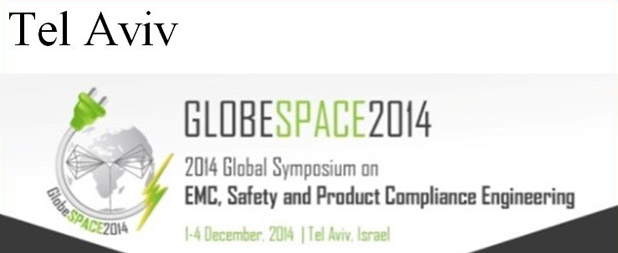Since its inception in 1963, the Engineering in Medicine and Biology Society (EMBS) has been focused on the intersection of engineering and health. EMBS members have embarked on amazing feats of engineering, such as developing sophisticated sensors in clothing capable of monitoring a person’s mental state, or harnessing nanotechnology to delivery drug therapies to patients only in the organs and systems where they are needed and without side effects. They have created powered exoskeletons allowing a person who is weakened or paralyzed by injury or disease to walk and lift, and have developed wireless systems to monitor those with sleep disorders with the goal of improving sleep. But as technology evolves something else has become clear: IEEE engineers in diverse and varied areas, it turns out, are often working on the same problems.
Enter the Life Sciences Technical Community (LSTC), a new initiative formed to help build collaboration and communication among an array of IEEE societies making contributions in the Life Sciences.
IEEE Technical Communities were developed several years ago to support particular technology challenges or cutting edge subject areas. They are formed around a common area of technological coverage, which usually includes multi-disciplinary topics. Communities may vary in maturity, but each provides an opportunity for increased connection and awareness of developments in an evolving area. As a transition from the Life Sciences Initiative approved by the IEEE Board of Directors in 2010, LSTC became one of the IEEE Technical Communities with the goal of providing a permanent home for IEEE Societies with interests in the Life Sciences.

LSTC has the support of the Presidents of the six Founding Societies: Circuits & Systems, Communications, Computer, Consumer Electronics, Control Systems, and Engineering in Medicine and Biology. Each of the six societies has different technical interests that intersect the fields of engineering and health sciences. LSTC is led by a steering committee comprising two representatives from each of the six Societies. Goals of LSTC include development of joint activities that will be of interest to members in these societies with potential expansion to other interested Societies. Some of the related interests of each Society are outlined below. The broad international impact is apparent in the sample conference photos accompanying each Society.
LSTC Founding Societies
Engineering in Medicine and Biology Society, Bruce Wheeler, President
The entire focus of EMBS is engineering applied to health-related areas. EMBS has five publications related to bioengineering, Neural Systems and Rehabilitation, Biomedical and Health Informatics, Translational Engineering in Health and Medicine, and Reviews in Biomedical Engineering, the latter in conjunction with Consumer Electronics Society as well as an additional four co-sponsored publications. EMBS is the oldest, largest and most global biomedical engineering society in the world and is responsible for well over 2/3 of all IEEE bioengineering and life science-related activity. The broad scope of interests include biomedical signal processing, biomedical imaging and image processing, bioinstrumentation, biosensors, bio-micro/nano technologies, bioinformatics and computational biology, systems biology, cardiovascular and respiratory systems engineering, neural and rehabilitation engineering, tissue engineering and biomaterials, biomechanics, biorobotics, therapeutic systems, clinical engineering, healthcare information systems, and telemedicine.
Circuits and Systems Society, Vojin Oklobdzija, President

The Circuits and Systems Society areas of interest include theory, analysis, computer-aided design, and practical implementation of circuits, and the application of circuit techniques to systems and to signal processing. The coverage of this field includes: biosensor devices and interface, implantable electronics, telecare systems, body area network/body sensor network, lab-on-chip and bioMEMS, bio-inspired systems, brain machine interfaces, biofeedback and electrical stimulation, biomedical imaging technologies and image processing. Publications include Transactions on Biomedical Circuits and Systems (co-sponsored by EMBS), Journal on Emerging and Selected Topics in Circuits and Systems.
Communications Society, Sergio Benedetto, President

The Communications Society provides a long list of health-related topics including remote services for eHealth, mobility in wireless healthcare sensor networks, health and mobile health information systems, mobile health, modeling emergency and telemedicine health systems, ambient assisted living’ electronic health records, security and privacy on eHealth, and cellular communications for eHealth. The Society publishes four Transactions: Communications, Network and Service Management, Networking, Wireless Communications, a joint Journal IEEE/ACM Transactions on Networking, along with an additional eight co-sponsored publications.
Computer Society, Dejan Milojicic, President

The Computer Society has broad general interests, several of which provide important methodologies related to Life Sciences including artificial intelligence, mobile data management, intelligent agents, pattern recognition, healthcare informatics, bioinformatics, algorithms, high performance computing, machine learning, data mining, big data, cloud computing, and bioengineering. The Society magazine IT Professional has a special August issue on Life Sciences Computing and also co-sponsors IEEE/ACM Transactions on Computational Biology and Bioinformatics with EMBS.
Consumer Electronics Society, Stefan Mozar, President

Consumer Electronics is involved in many health-related areas, including application of haptic devices in rehabilitation medicine, computer-aided design, and critical reviews of current methods important in biomedical engineering. The Society co-sponsors Reviews in Biomedical Engineering with EMBS. This publication contains critical reviews of methods applied to current clinical problems, in which biomedical technology is playing a crucial role.
Control Systems Society, Jay Farrell, President

The Control Systems Society has broad interest in modeling, design, optimization and feedback control of complex systems, including cyber-physical systems, robotics and autonomous machines, medical and healthcare systems, and nonlinear systems, with applications in medical engineering, systems physiology, systems neuroscience, molecular systems biology, synthetic biology and molecular programming. Engineering products of interest include drugs and drug treatment protocols to treat disease, advanced medical devices, biosynthetic pathways for materials synthesis, and biological circuits for diagnostics, therapeutics and molecular-scale control systems.
LSTC Structure
LSTC currently has a Portal, an eNewsletter, and a virtual community of close to 3000 members.
Two representatives from each of the six Founding Societies are appointed to the LSTC Steering Committee. Inaugural appoints are:
- Circuits and Systems (Wai-Chi (Winston) Fang, Mohamad Sawan)
- Communications (Joel Rodrigues, Nazim Agoulmine)
- Computer (John Walz, Albert Zomaya)
- Consumer Electronics (Nahum Gershon, Stefan Mozar)
- Control Systems (Richard Murray,Mathukumalli Vidyasagar)
- Engineering in Medicine and Biology (Bruce Wheeler, Metin Akay)
LSTC Activities
In its first year of existence, the LSTC has been busy. In February 2014, LSTC representatives staffed a booth at the HIMSS Conference in Orlando, in conjunction with IEEE. LSTC will have a booth at IEEE Sections Congress in Amsterdam in August to raise visibility and provide information. A short presentation will be given in one of the breakout sessions during the Congress. In December, LSTC will be a participant in the IHA mHealth Summit in Washington DC, sharing a booth with the IEEE Standards Association. Plans for next year include a potential conference in Istanbul. LSTC is also the driving force behind a new journal dedicated to the Life Sciences, the IEEE Life Sciences Letters (LSL). LSL is co-sponsored with CAS, CSS, and EMBS. The journal will publish short, open access articles and aims to deliver a rapid turnaround from submission to publication. The key scientific themes addressed by the journal will initially include personalized medicine, pharmaceutical engineering, synthetic biology, and systems biology. The Editor-in-Chief is Frank Doyle, and the launch is planned for fall 2014, with the first issue in Winter 2014.
Long-Term Goals
LSTC seeks to form a place for IEEE Societies to join together to provide a broad-based home for IEEE members who are interested is some aspect of the life sciences. The Community also aims to raise visibility of these activities to IEEE members as well as a broader community. LSTC will provide a home for cooperative endeavors toward the emergence of health-related activities within the IEEE. LSTC is open for other Societies to join if one or more of their interests intersect technologies related to health. A major goal is to emphasize the broad spectrum of IEEE health-related activities to IEEE members and to the general public.



